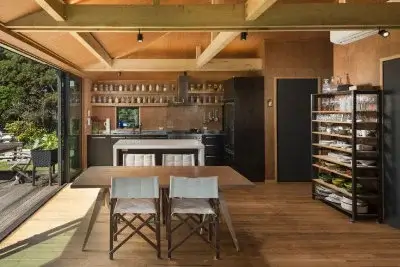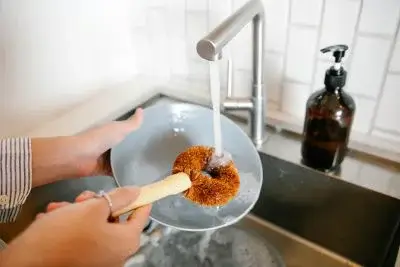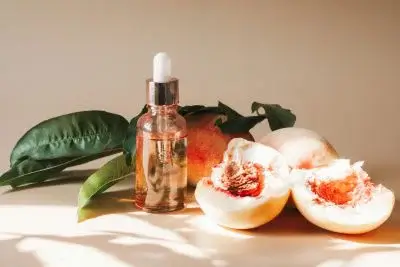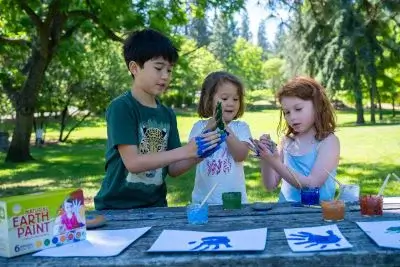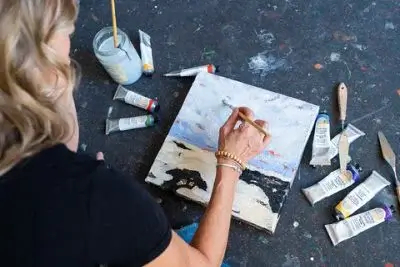We are your official New Zealand and Australian importer and distributor for Natural Earth Paint
[/vc_column_text][/vc_column_inner][vc_column_inner width="1/4"][vc_single_image image="45" border_color="grey" img_link_target="_self"][/vc_column_inner][/vc_row_inner][vc_images_carousel images="43,44,42,41" img_size="default" eventclick="link_no" custom_links_target="_self" mode="horizontal" speed="3000" slides_per_view="1" autoplay="yes" wrap="yes"][vc_product_manufacturer per_page="100" page="1" orderby="id_product" order="DESC" display_type="grid" id_manufacturer="1-"][vc_row_inner css=".vc_custom_1564443817095{margin-right: 0px !important;margin-left: 0px !important;padding-right: 0px !important;}"][vc_column_inner width="1/3" css=".vc_custom_1564443767069{margin: 0px !important;padding: 0px !important;}"][interactive_banner banner_title="Children's Art Supplies" banner_title_location="center" icon_disp="none" banner_image="49" banner_height_val="350" link_opts="none" banner_style="style11" banner_opacity="opaque" banner_height="banner-block-custom-height" banner_bg_color="rgba(176,43,29,0.8)"][/vc_column_inner][vc_column_inner width="1/3" css=".vc_custom_1564443823582{margin: 0px !important;padding: 0px !important;}"][interactive_banner banner_title="Fine Art Supplies" banner_title_location="center" icon_disp="none" banner_image="51" banner_height_val="350" link_opts="none" banner_style="style11" banner_opacity="opaque" banner_height="banner-block-custom-height" banner_bg_color="rgba(176,43,29,0.8)"][/vc_column_inner][vc_column_inner width="1/3" css=".vc_custom_1564443732705{margin: 0px 0px 0px 0px !important;padding: 0px !important;}"][interactive_banner banner_title="Natural Face Paints" banner_title_location="center" icon_disp="none" banner_image="50" banner_height_val="350" link_opts="none" banner_style="style11" banner_opacity="opaque" banner_height="banner-block-custom-height" banner_bg_color="rgba(176,43,29,0.8)"][/vc_column_inner][/vc_row_inner][vc_row_inner css=".vc_custom_1564445226323{margin: 15px !important;padding: 30px !important;border: 1px solid #dd9933 !important;}"][vc_column_inner width="1/2"][vc_column_text css_animation="appear"]What is Natural Earth Paint?
Award-winning and Gold certified Green America business, Natural Earth Paint, uses natural earth and mineral pigments and organic ingredients to make completely safe, sustainable, and beautiful art supplies for children and fine artists.
Earth pigments are clay and minerals prevalent in native soils all over the world.
By leaving out the preservatives, heavy metal toxins, solvents, synthetics, additives and fillers, our products are of the highest quality - pure, radiant and the most archival and durable paints available.
[/vc_column_text][/vc_column_inner][vc_column_inner width="1/2"][vc_column_text css_animation="appear"]Why Natural Earth Paint?
Safety
Natural, non-toxic, hypo-allergenic, and kid safe. Free of toxic heavy metals, solvents, parabens, phthalates, formaldehyde, additives, petroleum-based dyes and nano-particles.
Environmental
100% solar powered facility, 100% recycled and biodegradable packaging
Quality
The highest quality pigments from Italy and France, organic ingredients, hand-crafted in small batches, no additives, filters or toxins of any kind.
Innovation
The only products of it's kind - the world's only non-toxic, vegan Gesso, the only natural and 100% non-toxic solvent, varnish, oil paints, etc.
- Students and teachers in schools and colleges where the practice of oil painting is prohibited because of the terrible-smelling solvents and the heavy metal toxins notorious in readily available paints such as Lead White or any of the cadmium colors.See our Safety page.
- Artists working in shared studio space where the buildup of solvent fumes could lead to an acutely dangerous concentration of vapors.
- Artists who work within a small home environment and wish to reduce the odor of oil painting.
- For travelers, Natural Earth Paints are easy to transport on airplanes since they come in convenient packets of powder that pack easily. Make sure the walnut oil isn't in your carry-on bag, or purchase it separately at a grocery store at your destination.
- Anyone wanting to paint without harming the earth.
-Artists who want more vibrancy and luminosity in their paintings without fillers and preservatives to dull the color.[/vc_toggle][vc_toggle title="How do I store mixed oil paints & how long do they last once mixed?" open="false"] For several options, read our blog post on the subject[/vc_toggle][vc_toggle title="Do you have a non-toxic fabric paint that is permanent and won’t wash out?" open="false"]We do not at the moment, although many people buy our pure, natural pigments and mix them with clear acrylic medium (although acrylic medium is not natural at all) for a permanent fabric paint. Our children’s paint works great on fabric but will wash out.[/vc_toggle][vc_toggle title="Can you paint on metal, concrete or exterior surfaces?" open="false"] For metal, there are several possibilities, you can use an oil based primer on the surface first or prepare the metal in a certain way but there are many opinions on this topic online if you do a quick search. Our oil paints behave exactly like conventional artist oil paints so it’s easy to find info. For concrete, you would also need a proper primer before painting with oils. Once again, a quick google search will give you lots of opinions on this topic. Our paints are not meant for exterior surfaces. They will not hold up to regular rain unless sealed. We do not know of a non-toxic, exterior sealer at this time.[/vc_toggle][vc_toggle title="Is it toxic to breathe the pigment dust before mixing it into oil paint?" open="false"] It is not healthy to breathe any type of dust into your lungs, even if it is non-toxic and natural, like our pigments or even dust from a dusty, dirt road. Avoid creating clouds of dust when mixing your paint. If you simply scoop out pigment onto a palette and mix with oil, no dust will be created. Some people who are extra sensitive or concerned about dust can wear a Niosh certified mask and that will protect you completely.[/vc_toggle][vc_toggle title="Are your products free of nuts, dairy or gluten for people with allergies?" open="false"] None of our products contain gluten. Most of our products do not contain nuts or dairy. The bottles of refined walnut oil for oil painting kits is made from nuts but it is not processed in our facility. The Earth Flag Craft Kit contains dairy (milk-paint) but can be made vegan if requested.[/vc_toggle][vc_toggle title="Where do your pigments come from?" open="false"] Visit this link for detailed information about each pigment[/vc_toggle][vc_toggle title="How long does it take to ship internationally?" open="false"]International orders usually take 1-2 weeks for delivery but it varies greatly because of customs – we never know how long packages will be kept in customs. The average shipping time is 5 days-2 weeks.[/vc_toggle][/vc_tab][vc_tab title="Recipes" tab_id="1564438144307-2-7"][vc_row_inner][vc_column_inner width="1/1"][vc_column_text]
Earth Egg Tempera
History: Tempera painting predates oil painting as a professional painting medium. It has unique characteristics: it produces a crisp, luminous, almost linear effect that’s quite different from oil. Using egg yolk as the binder, this ancient technique makes a water-soluble paint that dries quickly, allowing for over-painting with more tempera or other mediums. If you have never tried it, we thoroughly recommend the experience! See a detailed Step by Step with photos here on How to make Gold Egg Tempera Paint.
Ingredients: egg yolk, water, earth pigments
Prep Time: 5 minutes per color
Process:
- Separate the yolk from the white: Break open an egg, cleanly separating the yolk from the white. Keeping the yolk whole, dry it by passing it back and forth in the palms of your hands, drying the palm with each pass (or roll it on a paper towel).
- Remove yolk from the sack: Hold the yolk over a dish or jar with your thumb and forefinger, and pierce the sack to allow the contents to flow out. Discard the empty sac.
- Mix with pigments: Mix yolk with earth pigments (start with 1:1 and then add more yolk as needed), and use water to thin the paint. A drop or two of Clove Oil can be added to slow spoilage. Tempera paint does not store well once mixed, so paint away!
Earth Pastels
This is a natural chalk/pastel recipe used by many Renaissance artists for drawings. Making your own pastels allows you to create them as soft or as hard as you like. Commercial pastels have to be made hard enough to withstand breakage during shipment. As long as you're not shipping these, you can make soft pastels that are more yielding and do not dig into the under-layers of the paper as much as harder pastels do. The paint quality will be richer, and the colors more intense.
Ingredients: earth pigment, water, binder of your choice (limestone powder, wheat paste, honey or white soap (grate and dissolve a small amount in water)).
Prep Time: 5 – 45 minutes, depending on which binder you use.
Process:
- Mix pure earth pigment with a small amount of water (with a palette knife) to create a thick, paste-like material. Start with a 1:5 proportion (water to pigment) and adjust as needed. Add binder.
- Roll it on an absorbent surface (newspaper or paper towels). Roll it into stick form, and let it dry. If the dry pastel doesn’t hold together or is too crumbly you should add a tiny bit of binder such as wheat paste, limestone powder, dissolved soap, or a honey/water solution (1:5) - example: 1 Tbsp. pigment: 1 tsp. limestone powder. Experiment because each pigment has different properties and acts differently.
Wheat paste recipe: wheat, rice, or rye flour work well. Use about 1 part flour to 6 parts water. Mix flour with a small amount of water to make a smooth paste. Then add hot water to make a thin consistency. Cook on low heat, stirring constantly until it thickens to an oatmeal-type consistency. Use immediately or refrigerate to preserve it for a few days.
Wall Mural Earth Paint
(Note: the Children's Earth Paint is also a great mural paint)
Ingredients: earth pigment, flour paste (or white glue), and water
Process:
- Mix 1 - 2 parts water with 1 part glue or flour paste (recipe below).
- Add pigments until desired color is achieved, not exceeding a ratio of 20% by volume.
- Note - wet paint is much darker than when it's dry on the wall.
Wheat paste recipe: wheat, rice, or rye flour work well. Use about 1 part flour to 6 parts water. Mix flour with a small amount of water to make a smooth paste. Then add hot water to make a thin consistency. Cook on low heat, stirring constantly until it thickens to an oatmeal-type consistency. Use immediately or refrigerate to preserve it for a few days.
Casein Earth Paint
History: Derived from milk, Casein Paint dates back to Asian cave paintings, and it was widely used up until the Renaissance. It is durable, fast-drying, and water-soluble, but it smells a little strange (the smell dissipates as it dries). Do not use if you are allergic to dairy products.Ingredients: 2 Tbsp. casein powder; 1 Tbsp. borax, 1 oz. earth pigment
Prep time: 5 min. prep; then let sit overnight. 5 more min., and let sit an hour.
Process:
- Mix 2 Tbsp. casein powder with 5 oz. warm water, and let sit overnight.
- Discard the water that accumulates on the surface.
- Mix 1 Tbsp. borax with 4 oz. hot water, and add to casein/water mixture. Let sit for one hour.
- Mix a spoonful of the casein mix with pigment in a glass bowl or on your palette.
- Paint on wood, paper, or canvas. Add water if you want a watercolor effect. Mixtures last a week if refrigerated.
Natural Wood Stains
Simple Stain: There are several techniques to make natural wood stains. The simplest method is to add pure earth pigment to walnut oil and rub it onto wood with a clean rag. Start with 1 part pigment to 4 parts oil, and adjust proportions as needed.
"Shaker" Wood Stain: Here is another technique that uses water instead of oil.
Prep time: 45 min. – 2 hours
Process:
- Combine 1 Tbsp. earth pigment and 1 cup of water in a saucepan. Gently boil it down until you have a thick paste. Let this cool.
- Rub the stain paste into wood using a cotton cloth. Rubber gloves should be worn to prevent staining of fingers.
- Let each coat dry. Rub in successive coats until the wood will not absorb any more. Softwoods work well with this stain, since they are very absorbent. Since there is no binder, a sealer must be applied to prevent the color from transferring.
Gouache Paint
Gouache is a beautiful water-based artist paint, similar to acrylic or an opaque watercolor.
1. Mix 1 cup hot water with ½ cup Gum Arabic Powder
2. Add in 1/5 cup honey (a little less than ¼ cup)
3. Add two drops of clove or thyme essential oil to help preserve it
4. In separate bowl, mix 1 Tbsp. honey with 9 TBSP of above mixture (1:9) - this is your "base".
5. Mix 1 tsp. limestone powder (whiting) with 6 tsp. pigment.
6. Mix one part "base" with one part pigment/limestone mix. (example: 1 Tbsp. base & 1 Tbsp. pigment mix)
7. Store in airtight jar.
Glair Earth Paint
Glair paints were popular during the 5th century to create illuminated manuscripts. Because the paint is not very strong, it works best on paper. It’s perfect for art journaling and is very quick and easy to make.
Ingredients: egg white & earth pigment
Process:
- Beat egg whites into a froth that is like a meringue in consistency.
- Let sit at room temp. several hours or overnight.
- Gently remove the foam on top (the liquid that remains is glair)
- Mix 1 part glair with 1 part earth pigment. Use this paint like watercolor, thinning with water if necessary. Glair paint does not store well, so make enough for one painting session or store in fridge.
Acrylic Earth Paint
For painters who enjoy the strong, fast-drying qualities of acrylic, you can always make acrylic earth paint that is more luminous than tube acrylics because there are no fillers or preservatives.
Ingredients: acrylic medium & earth pigment
Prep time: 3 min. per color
Process:
- Combine 1 part acrylic medium and 1 part pigment by placing the medium on your palette and carefully adding the pigment.
- For more opacity, add more pigment. Store paints in airtight containers. Thin with water.
Professional Watercolors
Watercolor Base:
- Mix 1 cup hot water with ½ cup Gum Arabic Powder
- Add in 1/5 cup honey (a little less than ¼ cup)
- Add two drops of clove or thyme essential oil to help preserve it
(If you want a stronger preservative you can use sodium benzoate – a food grade preservative - 1/2 - 1 tsp.)
-In separate bowl, mix 1 Tbsp. honey with 9 TBSP of above mixture (1:9)
Mixing in Pigment:
Mix 1 part mixture with 1 part pigment (adjust as necessary)
- For example, 9 tsp. mixture and 9 tsp. pigment
- Note: Each pigment has completely different properties and behaves differently so determine what each pigment needs. For example, I found that blue needed a little more pigment than 1:1. And yellow ocher needed quite a bit more pigment.
Store in airtight jars or let dry into cakes (add a few drops of glycerin to prevent cracking if drying into cakes - optional).
Earth Sand Painting
History: The ancient art of sand painting among Native American tribes in the Southwest was a form of religious expression. In its original form, sand paintings were created to exist only a few hours. Toward the end of the 20th century, many Native Americans began creating more permanent sand paintings by using glue under the colored sand.
Ingredients: 1 cup of a fine, craft sand. 1 tsp. earth pigment
Prep Time: 3 min. per color
Process:
- Place sand in a glass jar, and add the desired amount of pigment. The amount we suggest above is only an approximation.
- Shake vigorously to coat the sand particles with pigments. Since pigments are not dyes, their fine particle size mixes with the sand to coat it, but the pigments do not actually dye the sand. Therefore this is not a colorfast application. However, coloring sand by hand and choosing single or combinations of pigments gives you an infinite range of colors that cannot be matched by store-bought craft sand.
Tips for sand painting:
- Work with only one sand color at a time. Finish all areas of your painting with that color before proceeding to a new color.
- Use dark colors before light ones when possible.
- For more permanent sand paintings, draw with glue on a hard surface, and "paint" the sand onto the glue.
- Upon completion of all colors, you may notice some colored sand has invaded other areas of a different color. Wait until all ares are completely dry. Then use a can of compressed air, such as that used to clean computers, to blow this excess off.
Painting Varnish:
Ingredients: One egg white
Instructions: Whip one egg white until it thickens. Place the whipped white in a glass container and cover it with water. Cover container and allow it to sit overnight. Remove the liquid that accumulated and use as varnish.


